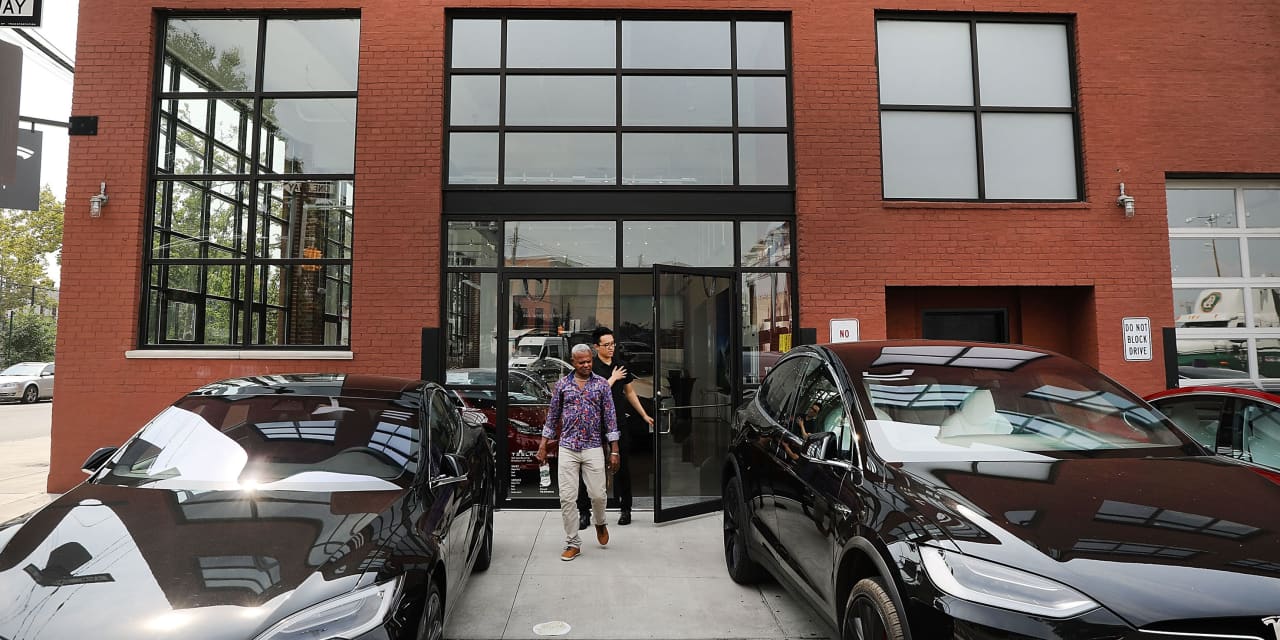I’m expecting a $15,000 tax bill this year. I installed a residential solar and battery system in the spring of 2023 for $60,000. This would entitle me to an $18,000 tax credit.
I am contemplating purchasing a Tesla Model Y
TSLA,
by the end of the year, which would entitle me to a $7,500 EV tax credit.
Would the EV tax credit be applied first to reduce my tax liability? Or would the tax credit for the solar installation go first to reduce my tax bill and make the EV credit irrelevant?
Slamming the Breaks
Dear Slamming,
If you are focused on the tax incentives, wait until next year to purchase the Tesla.
“It is correct that the solar credit would be considered first and would reduce the tax for 2023 to $0, rendering the credit for the Tesla null,” said Tom O’Saben, director, tax content and government relations at the National Association of Tax Professionals, an organization with 24,000 members.
If you purchase your car before the end of the year, “you’re throwing money away,“ he added.
As more people eye these credits, your question about timing is going to become more common, O’Saben noted.
The Inflation Reduction Act has been on the books for more than a year, and the law is using tax incentives to make the idea of going green extra alluring to Americans.
The Residential Clean Energy Credit is offering 30% credits toward the costs of solar panels installed through 2032. The credit falls to 26% of the total costs in 2033, and 22% in 2034.
Here, 30% of a $60,000 solar panel is $18,000.
Tax credit for electrical vehicles
Then there’s the tax credit for new EVs, which goes up to $7,500 for qualifying vehicles and income-qualifying households. They apply to individuals making up to $150,000 a year, and married couples filing jointly who make up to $300,000 a year.
Both of these tax credits are nonrefundable. The solar-panel credit is the only one where the unused tax credit carries forward to a new tax year. Unused money from the EV cannot be applied towards tax bills in coming years.
Tax credits shrink liability, but there’s a difference between refundable and nonrefundable tax credits.
A refundable tax credit reduces tax liability and the excess that isn’t used converts to a tax refund. The Earned Income Tax Credit is one example of a refundable credit.
Nonrefundable credits, like the two at issue, will reduce your tax liability though that excess will not turn into a tax refund.
Start with the big-ticket items
The money from a tax credit rewarding people who save energy with things like home energy audits, and improved insulation should also be applied before the EV tax credits, he said.
“Start with the big ticket items” in the array of Inflation Reduction Act tax incentives. “A lot of those are going to burn up tax,” O’Saben said.
The sequence matters.
If you bought a car this year, you’d get the $7,500 credit for qualifying EVs. But first, the $18,000 credit from the solar-panel installation would snuff the $15,000 tax bill. But then you would be left with a $7,500 credit in hand with no tax bill to reduce and no way to apply it to future tax years.
Now suppose you bought the EV next year. The remaining $3,000 is carried over and goes towards the tax liability before the $7,500 from the EV gets applied, O’Saben said.
In fact, if your 2024 tax liability is already down to $0 by the time your EV credit would apply, it might still be for naught.
Wait a few weeks to buy the Tesla
You could wait a few weeks, buy your Tesla in January and put the credit towards your 2024 income taxes. But who really has a firm understanding of what their tax liability will be in a year? “Nobody does,” O’Saben said.
That’s why planning is key and also acknowledging the chance that you “may have to wait until 2025,” O’Saben said.
Next year, people who are interested in EVs will find it easier to use the $7,500 tax credit. They can apply the tax savings at the point of sale to effectively reduce the price at the lot.
“The car dealership is not a tax professional,” O’Saben said.
One caveat: Starting next year, it’s “likely” that certain Teslas are not going to get the full $7,500 credit, according to the car maker’s website.
The tax credit falls to $3,750 “for Model 3 Rear-Wheel Drive and Model 3 Long Range on Jan. 1, 2024. Take delivery by Dec. 31 to qualify for full tax credit,” according to the site.
The issue is tied to government requirements for sourcing battery parts.
Maybe there’s non-tax reasons why you think it’s best to buy this car now. People have to get places, after all.
But if it’s about taxes, tap the brakes for now.
Read the full article here










